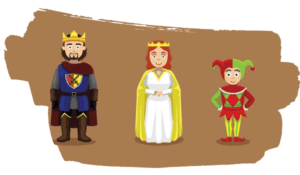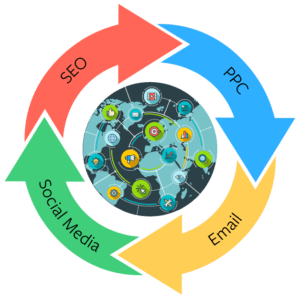People do business with those they trust;
they trust those that help them understand.
When you share your expertise you help prospects understand your product or service value and how it serves their want or need. Doing that builds trust and moves the relationship forward. If you do not believe this is true then save your time and treasure; stop reading this tactic and have a great day. If your website has a blog with great content then this tactic can help you leverage that investment.
Strategy Rationale
Many businesses create content as part of their SEO but then fail to fully leverage the asset. If your business is already publishing expert content then the content is a sunk cost and leveraging that can create a very strong ROI. For this tactic to be supported the business needs to believe in a multi-contact sales pipeline where one touch builds on the prior. In professional or home services this is a common strategy for the early stage prospects but it is not effective for time sensitive emergency service. The client gets additional leverage when they are in a high or very high cost per click market and this strategy can be a way of side stepping the competition. We have found many high click value situations where the traffic from the Display network is responsive to the Education Strategy at a fraction of the cost of Search.
Synergies
This strategy can have a synergy with search traffic, especially when the search is aided by an audience built by traffic through this strategy. This could justify a higher bid for highly competitive searches when the visitor has already been exposed to the brand with content. The theory is that the person will trust the brand more, when they have been exposed to educational content from that brand.
We often seek and get email subscriptions that allows us to communicate directly to prospects. This removes the advertising cost from future parts of the sales pipeline. We then create audiences of engaged readers so we can push them to the next article or even to new, direct response advertising.
Where it does NOT fit
This strategy is a bad fit for a transactional business model where a purchase is the singular goal. There is nothing wrong with this model but this strategy would be a bad fit. In e-commerce, where the relationship between the click and the sale is more defined, the educational model is often not the choice of the business.
CPC Matters
The CPC (Cost Per Click) of the client is an important consideration in this tactic. We have many situations where late stage keywords are so expensive that search is no longer viable. Not because it does not work, but because it’s too expensive to meet their target CPA (Cost Per Acquisition). In markets where the Search CPC is $20+, click costs in Display can be under $0.30.
Content is King, Queen, and Court Jester
An education strategy starts with a content plan that serves your audience of prospects. What is it about your business that they value? Write about that. If you do not know what that is – ask them! Demonstrate your competency and passion for the topic and you will create a loyal following.
Promoting your Content
Creating great content and then hiding it from the world is one of the original sins of online marketing. To create value, you must distribute your content and use every tool at your disposal to do that. This means going after PPC, SEO, Email, Social Media, and every other distribution you have access to.
 PPC
PPC
PPC can help push traffic to your content through both search and display. In many cases, the cost of search is too high to make economical sense but often times, display can meet the cost goals. When setting up tracking for this type of campaign, consider the conversions that you want to track. We typically set up conversions for:
- Time on site
- Engaged Reader
- Action Taken
- Subscription or Purchase
- Phone Call
1 & 2 are soft conversions (touches) and it requires a number of these to make the phone ring. These are less valuable than 3-5 but they give us early data to work with. In time, you will find that these soft conversions follow the same pattern as your other conversions. The benefit is that you will see valuable engagement data much sooner.
Traffic for educational content costs much less than your search with high intent levels. All accounts have a handful of searches that are the core of their business and the format is always the same. Typically it is the subject plus intent or geographic qualifiers. In our case, the search is “Adwords Expert” with AdWords as the subject and Expert as the qualifier. When someone does this search, they are looking for what we do. An example for a Plumber would be Plumber and the Major City Name (i.e. Plumber Los Angeles or Plumber near me). The subject by itself is too broad.
Goals Help Us Understand
Marketing without specific measurable goals is a waste of time and treasure. The earlier in the relationship pipeline that you can find a meaningful measurable goal, the better your campaign management. Here are some common ones used in an Educational Content Marketing Campaign.
Timed Reader is a common first level of traffic conversion. This is a visitor that read content and invested a meaningful amount of time doing so.
Engaged Reader visits your content page and then goes to other pages to learn more about your business. Visits from a content page to an About or Contact page are a home run. With well designed ads and great content, we often see conversion rates for Timed and Engaged Readers over 5%. We commonly refer to these as marketing touches and in most businesses, there is a correlation between touches and more meaningful conversions.
Email Subscriptions are (obviously) a common goal for this traffic. In many cases, we see subscription rates of 1% or better, creating a steady flow of prospects to our email list. This list can remove future costs, improving business performance dramatically.
Appointments or Phone Calls are a big goal, as it is the start of the conversation with a prospect.
Orders are not commonly a goal in an education campaign because it’s just such a big leap to a final order. It does happen and sometimes it’s the only thing clients want to measure but that is a monumental mistake.
There is a relationship between early-stage conversions (Timed or Engaged Reader) and later-stage conversions (Subscriptions, Appointments, Calls, and Orders) that can be expressed as a ratio or percentage. Early to late stage ratios are often in the 10-20+ range. This allows you to adjust the CPA value for each conversion type. Measuring the early stage conversions helps you find the right traffic to earn the more valuable conversions. What is commonly missed is that it takes multiple touches to move a prospect through the pipeline.
And SEO
We love SEO traffic but it’s hard to earn, harder to keep, lacks supporting data, and often costs too much. In all marketing plans, you have to explore and test all the reasonable channels and SEO is always one of those. SEO has lots of moving parts but at its core, it’s about keyword density within the content. We use word clouds and PPC impression data to visually see this data. The secret here is to tune the content to the words with the most traffic because nothing is worse than being listed first for a keyword nobody searches for.
Educational content, by its nature, optimizes itself but, it is important to pay attention to your Page Title, Meta Tag Description, Tags, and Categories. When you write content that your customers love, 90% of the SEO will take care of itself. You just have to be careful of humor or implied meanings in your headers and titles because it often confuses the indexing of the content.
And Email
After SEO, email is my next favorite tool in content strategy promotion because of its low cost. The email list creation is primarily a sunk-cost with a very low use-cost. When promoting content, my preference is to do it in small bites, so emails promote one item at a time. It has been my experience that you get better response from several small emails compared to one big one with several articles.
And Social Media
Social media is an excellent source of additional traffic from your content tactic. In both Facebook and LinkedIn, we have seen great responses to high value unique content. Skipping this posting to your social media profile is a marketing sin of the first order. Of course, the distribution of this and its support of the tactic depends on both, personal and company networks.




 PPC
PPC